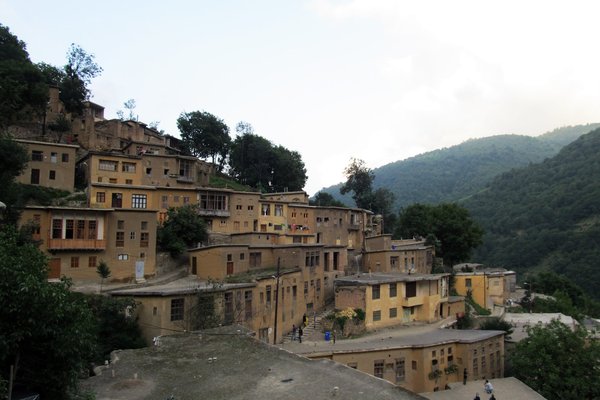Iran
The Historical City of Masouleh
The Historical City of Masouleh is known for its multi-level townscape, to fit into the natural slopes. Courtyards and roofs both serve as pedestrian areas similar to streets. It is 800 to 1000 years old.
Site Info
Official Information
- Full Name
- The Historical City of Masouleh (ID: 5204)
- Country
- Iran
- Status
-
On tentative list 2007
Site history
History of The Historical City of Masouleh
- 2023: Advisory Body overruled
- ICOMOS advised Not Inscribe. Finally became a Deferral (because of advisory mission deemed needed), after Referral Amendment was first proposed.
- 2023: Deferred
- Refocus nomination
- 2007: Added to Tentative List
- Added to tentative list
- Type
- Cultural
- Criteria
Links
- Related
-
- waset.org — Masouleh: A City; A History
- veryhungrynomads.com — Very Hungry Nomads blog: Masouleh | A Rooftop Village in Iran
- iranreview.org — Masouleh, Village On the Rooftops
All Links
Related Resources
- waset.org — Masouleh: A City; A History
- veryhungrynomads.com — Very Hungry Nomads blog: Masouleh | A Rooftop Village in Iran
- iranreview.org — Masouleh, Village On the Rooftops
News Article
- July 7, 2025 tehrantimes.com — Early Islamic metallurgical complex discovered at Masouleh
- Aug. 25, 2022 tehrantimes.com — Masouleh one step closer to being World Heritage
- Jan. 21, 2019 ifpnews.com — Iran’s Historic City of Masuleh Turns White by Heavy Snow
- Sept. 19, 2017 tehrantimes.com — Masouleh dossier at final stage for UNESCO tag
Community Information
- Community Category
- Urban landscape: Arabic and Middle Eastern
Travel Information
Recent Connections
News
- tehrantimes.com 07/07/2025
- Early Islamic metallurgical comple…
- tehrantimes.com 08/25/2022
- Masouleh one step closer to being …
- ifpnews.com 01/21/2019
- Iran’s Historic City of Masuleh Tu…
Community Reviews
Show full reviews
Masouleh is a town at 1,050m altitude in the Alborz mountains, in the north of Iran near the Caspian Sea. It dates from the 16th century, when the population of Old Masouleh was displaced due to an outbreak of the plague. Some 180 families still live in the ‘new’ village. Masouleh has been on Iran’s Tentative List since 2007, but the explanation provided why it should be considered a WHS is particularly concise: “The traditional and untouched architecture of some houses”.
I arrived at Masouleh on May 5th, a religious holiday in Iran. It quickly became clear that many Iranians had selected this mountain village as a destination to celebrate their day off. Long lines of cars were parked alongside the entrance road. Many had ditched their cars even earlier, and were picknicking on the bank of the road. I even noticed that a few women had removed their headscarves, a pinnacle of rebelliousness in the Islamic Republic of Iran.
The village only shows itself when you are right in front of it: it consists of yellow or beige coloured houses stacked on top of each other against the steep mountainside. The space is so limited that the roofs of the buildings below serve as roads for the level above. So if you really want to see something here, you have to climb. I started my round from the left, first uphill and then onto the main street joining the thousands of daytrippers. It reminded me of Volendam, a Dutch …
Keep reading 0 comments

